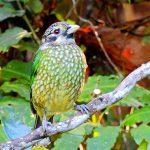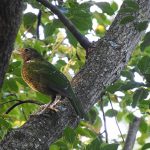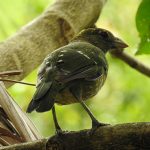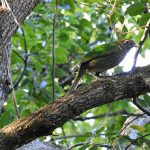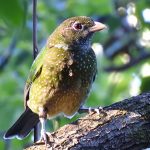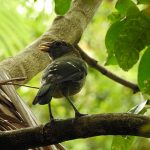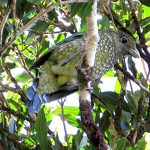GREEN CATBIRD
The Green Catbird is native to eastern Australia and a member of the bowerbird family.
Green Catbirds are medium-sized birds, measuring about 23 to 28 cm in length. They have predominantly bright green plumage, which helps them blend in with the dense foliage of the rainforests they inhabit. Their feathers are often tinged with yellow, and they have a distinctive black crown and face.
Green Catbirds are primarily found along the eastern coast of Australia, from north Queensland to northern New South Wales. They inhabit subtropical and tropical rainforests, where they prefer the dense undergrowth and canopies. These birds are often heard more than seen due to their secretive nature.
Green Catbirds are omnivorous and have a varied diet. They feed on a range of fruits, insects, and other invertebrates found in the rainforest understorey. They are known to forage for fruits like figs, berries, and small insects.
Green Catbirds are known for their melodious and cat-like calls, which they use for communication within their dense forest habitats. They can be heard making a variety of vocalizations, including whistles and chattering sounds. Their calls are often used to establish territory and attract mates.
These birds typically breed during the spring and summer months. Unlike other male bower birds, the male Green catbird does not build a bower, however the male will clear an area from which he will perform and display to other females. Similar to other male bower birds, he will attempt to attract females by displaying colourful fruits, flowers and leaves in his beak.
Green Catbirds construct cup-shaped nests made of twigs, leaves, and other plant materials in the dense foliage of trees or shrubs. They lay 1 to 2 eggs, which are incubated by the female for about 18 to 19 days. After hatching, both parents are involved in feeding and caring for the chicks.
Like many rainforest-dependent species, they face challenges due to habitat loss and climate change. Conservation efforts are essential to protect their habitats and ensure their continued survival.

